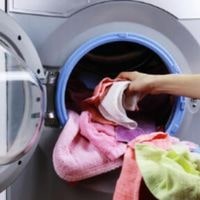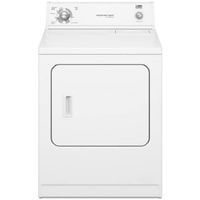Estate dryer not heating. When your dryer isn’t heating well, there are many common questions and problems you should look into before moving on to replace parts.
The most common culprits include clogs in the vent, tripped circuit breakers, and faulty thermal fuses.
Estate dryer not heating
Here, we will discuss some important common issues for the Estate dryer, not heating.
An igniter is not working
It could be an igniter issue. The igniter works by heating up in order to ignite the gas inside of your burner assembly which is used to heat your laundry.
If the igniter is not working, the energy will not be transferred – preventing your dryer from heating.
First, check if there is continuity on the igniter by using a multimeter. If it does not register any current from start to finish, you need to make sure that the igniter isn’t burned out and replace it accordingly.
Problems with input power
You might have a problem with your incoming power if your dryer is not heating. In order for electric dryers to work, they need 120 volts AC of power or 2 legs of this kind.
Unfortunately, it’s common for just a single fuse or circuit breaker trip to result in the dryer being able to run but is not heating up at all.
You can find the fuse box and check if it is actually broken and fixes it yourself, OR you can contact an expert like us who does everything for you!
Defective Main Control Board
If your dryer is not heating up, then it could be because of a defective main control board. Testing the main control board is an important step. If you can, try to inspect the board for signs of damage or wear and tear.
A damaged or worn-out control board may not be the problem if other components still work after the dryer is turned off and back on again (since a damaged or worn out control board would have to have been damaged or worn out already when other parts also became defective).
High Limit Thermostat not working
A high limit thermostat controls the dryer temperature and shuts off the flame when it gets too hot. This safety device is rarely faulty so it would be a waste of time to try to test its continuity.
If you suspect that any individual component is faulty, always test it with a multimeter before buying a replacement component. If all components prove to be working as expected, then you must replace its high-limit thermostat.
Flame Sensor not working
On a gas dryer, there is a flame sensor that detects the heat emanated by the flame. If there are issues with the flame sensor, then this will affect the heating system in your dryer. Before checking on the fault of the flame sensor, first, make sure that it is not due to a faulty igniter or thermal fuse.
To determine if there are problems with your flame sensor, use a multimeter to check for continuity at room temperature. If you don’t get any continuity at room temperature, it means that your flame sensor isn’t working properly and hence needs replacement.
Problem with Gas Valve Solenoid
Gas dryers have two gas valve solenoids. These open and close to allow gas to flow into the burner assembly and if they are faulty, they won’t heat.
If the igniter glows brightly but doesn’t light and flare up the natural gas, you might need to replace both.
Faulty Thermal Fuse
Your dryer may not heat because of a faulty thermal fuse. Thermal fuses control the internal temperature of the dryer to prevent it from overheating.
When the temperature gets too high, the fuse opens up and breaks a circuit preventing further power from entering into the heating element or burner.
Defective Timer
If your dryer isn’t getting hot, it may have a defective heating element. However, this is very seldom the case. Before replacing the heating element, check all of the more commonly defective parts.
If you determine that all of the other components are working properly, test the heating element by using an ohmmeter and review the wiring diagram.
If your heating element is defective, replace it with a new one from Grainger or another supplier experienced in dryer repair.
Related Guides
